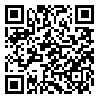BibTeX | RIS | EndNote | Medlars | ProCite | Reference Manager | RefWorks
Send citation to:
URL: http://edujournal.zums.ac.ir/article-1-850-en.html
Background and Objective: The E-learning has created the necessary ability for students to learn through the information technology and facilitate their learning process. The aim of this study is to investigate the impact of psychological variables on the inclination to E-learning among the students of Shiraz University of Medical Sciences.
Materials and Methods: The current study has a functional purpose, and from the perspective of data collection and gathering the information is in correlation descriptive kind. The population of the study includes 4780 students of Shiraz University of Medical Sciences. The sample s size was determined based on a sample of 355 people .The tools of collecting data is compilation of five standard questionnaires related to psychological variables of this study. The scoring stage was performed using the Likert 5-point scale. The data were analyzed using a software named (lisrel8.5).
Results: The results indicate a significant positive relationship between subjective norms and self-efficacy computer based variables to learn attitudes, perceived usefulness and e-learning among the students.The research results also showed that the intermediate variables of the research has a direct and significant effect on the criterion variable (E-learning) .
Conclusion: According to the results that indicate the perceived usefulness of e-learning is most effective University administrators are recommended to adopt appropriate methods to explain the benefits of using e-learning for students as well as efforts to improve their capabilities in this area.
Received: 2017/01/2 | Accepted: 2017/02/11 | Published: 2017/06/21
| Rights and permissions | |
 |
This work is licensed under a Creative Commons Attribution-NonCommercial 4.0 International License. |



